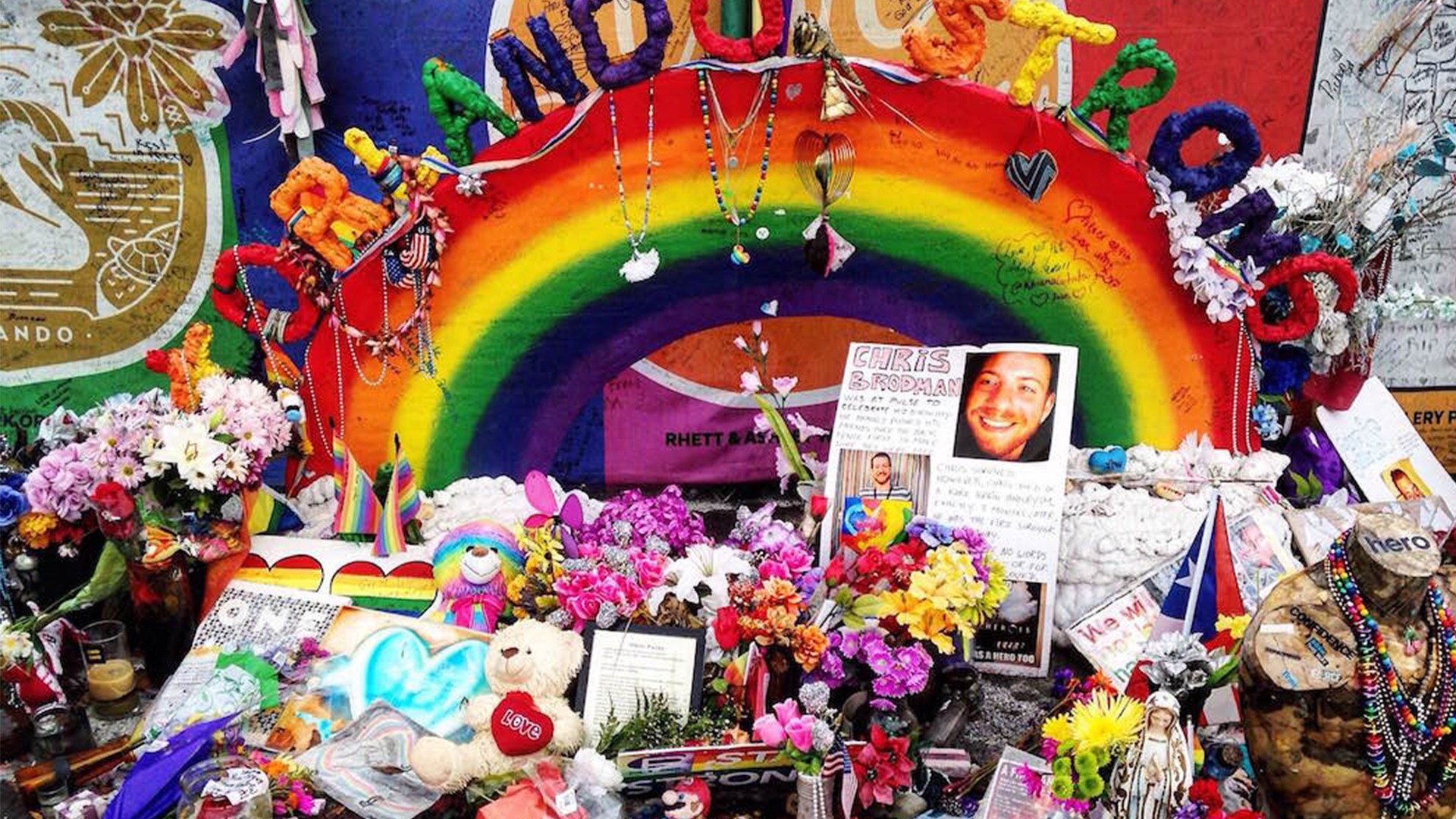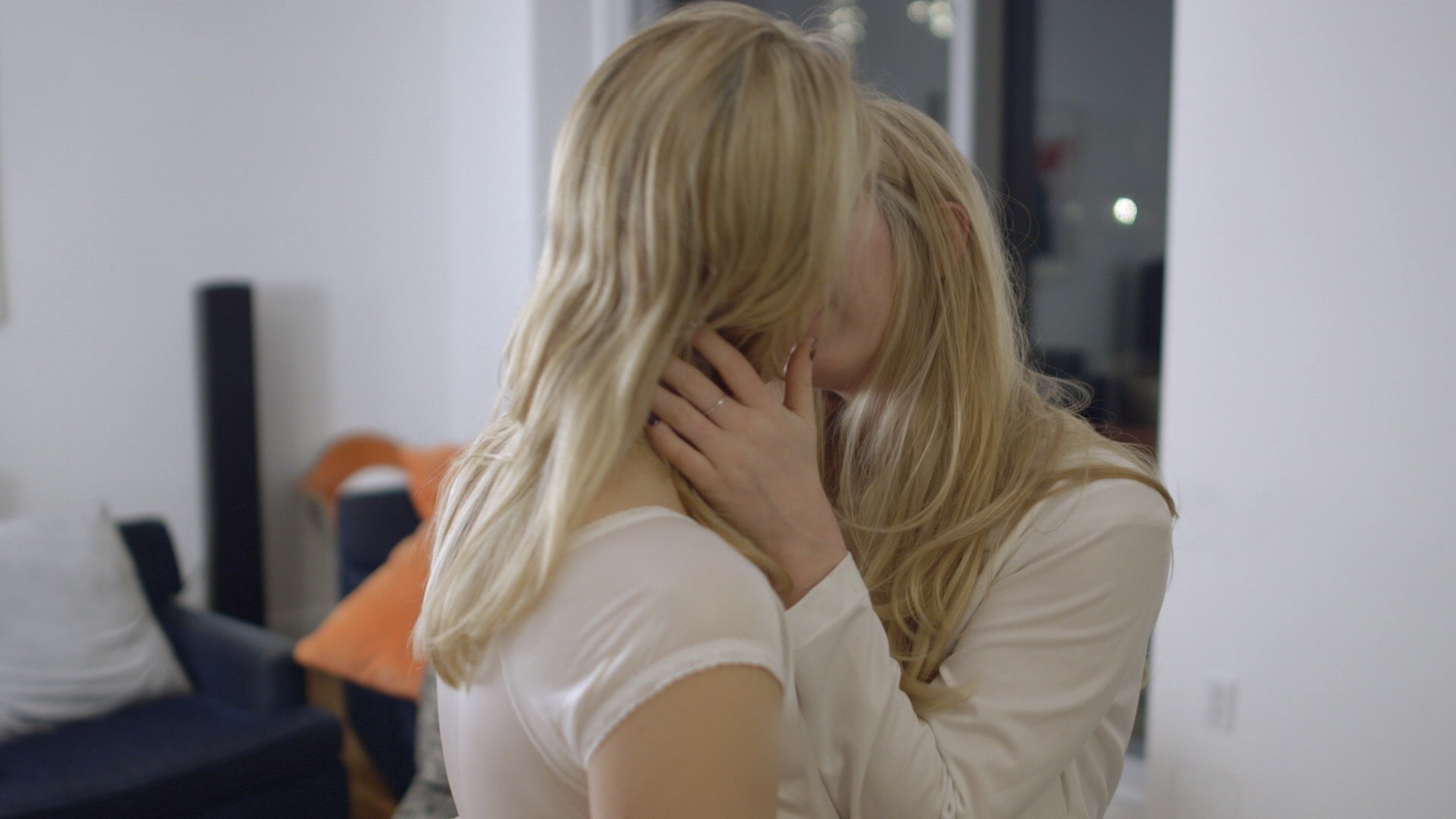Anika Mallard was sitting in math class when a friend passed her the phone. It was pulled up to an Instagram account containing pictures of the 16-year-old and several other black students with nooses around their necks and side by side with monkeys.This was a shocking bit of racism, even by the recent standards of California's Albany High, where seven of Mallard's peers had been caught giving one another the Nazi salute in the hallway. "It was really weird, and I wasn't expecting it," she told me of the photos. "I thought these people [who were involved with the account] were my friends. I've known some of these people since middle school, since elementary school."
Advertisement
The trauma of being targeted by people she once trusted caused Mallard to miss crucial weeks in her junior year and left her feeling brutalized. And the controversy over the racist Instagram account roiled the school, culminating in a near-riot targeting the teens behind the account.Albany High initially suspended 13 students associated with the private account for five days and threatened one with expulsion. Then, as most of the students prepared to reintegrate into the school, emails went out from the school district's superintendent and the school's principal identifying them as "racists" and "abusers." Parents later received another missive about a noose found at a local park, though cops later clarified it was a broken swing. A lawsuit brought forth by the families of four of the accused kids says that these messages—regardless of their veracity—helped create a pressure cooker that went off on March 30, when the students returned to school.
According to a complaint filed in federal court, on that day the offending kids "were forced to march through the high school and were lined up in full view of all or most of the student body. School administrators allowed the student body to hurl obscenities, scream profanities, and jeer at the Plaintiffs and the other suspended students, who were all not allowed to leave what the school considered an act of 'atonement' but was rather a thinly veiled form of public shaming."Related: My interview with Milo Yiannopoulos
Advertisement
That afternoon, the students were brought to a closed-door "restorative justice" session orchestrated by a group called SEEDS. The group, which did not return request for comment, describes itself online as an organization focused on "creating a safe space that enables the restoration of relationships and community healing through dialogue."Whatever dialogue and healing occurred behind closed doors, the hallways those students walked out to after their session was far from safe, according to the April suit. Mallard, who was among a group of students and others who gathered in those halls, remembers waiting for hours for the restorative justice session to end. When the suspended students finally emerged, tensions were high. People were hot and tired, and wanted to make their anger at the perpetrators of the account known. As the kids attempted to get through the crowd and out to their cars, some of them got struck in the head by some of the nearly 100 demonstrators who had gathered. One of the students allegedly had his nose broken.According to the complaint, a plainclothes Albany cop wouldn't protect the suspended kids from the crowd. "You caused this," the officer allegedly said.Lawyers are arguing that Albany's administrators were overly harsh in doling out punishment to the students who merely "liked" or commented on the racist photos. They say the majority of their clients still haven't returned to school out of fear for their safety. (An additional lawsuit filed on behalf of two more students in May says pretty much the same.)
Advertisement
"The district takes great care to ensure that our students feel safe at school, and we are committed to providing an inclusive and respectful learning environment for all of our students," Albany Unified School District superintendent Valerie Williams said in a statement to the Los Angeles Times in May. She did not return my request for comment. Jeff Anderson, who was principal of Albany High during these incidents and was reassigned as a result, could not be reached.
"The residents of Albany are ultra-liberal almost to the point of being inflexible in their beliefs," Darryl Yorkey, one of the attorneys, told me. "The school is trying to stamp out injustice wherever they can find it, and focus on these macro-concepts instead of what they should be paying attention to, which is school education. The school has done pretty much everything but provide tar and feathers for the rest of the students to ostracize them."What happened at Albany is a flash point in a nationwide debate that's trickled down from college campuses to high schools: What should be the punishment for racist social media posts? It's far from an academic question. High schoolers have been expelled or threatened with expulsion over hate speech in Illinois, Oregon, and Michigan. Kids across the country have engaged in racially tinged, often Trump-influenced, acts of bullying.What should be the punishment for racist social media posts?
Advertisement
The incident at Albany is significant, and not just because the outrage resulted in actual physical violence against the perpetrators. The liberal town is just down the road from Berkeley, where a national debate was sparked by left-wing protesters who shut down a Milo Yiannopolous speech there in February. Arguments over when speech becomes intolerable and what should be done when that line has been crossed have already turned violent; now the kids are involved. Call it the baby Battle of Berkeley.
Watch: The Pulse nightclub tragedy, one year later
The story of Albany's founding goes back to the early 20th century, when Berkeley ran out of space to store its trash, leading to an outbreak of bubonic plague. Berkeley's solution was to dump its excess waste in an unincorporated community then known as Ocean View. The people who lived there didn't like that very much, which caused a group of women to try to ward off the incoming garbage wagons with shotguns. When that didn't work, the people of Ocean View drew up a charter, established Albany, and adopted an ordinance against storing outside waste as a way to end the so-called Garbage Wars.Today, Albany's an overwhelmingly liberal place of about 18,000 people, 85.5 percent of whom voted for Hillary Clinton in November. Out of the 1,200 students who attend the local high school, only about 5 percent are black. It's the kind of sleepy suburb where a two-story Target store is considered an attraction. And it's once again dealing with toxic runoff from its neighbor.
Watch: The Pulse nightclub tragedy, one year later

The story of Albany's founding goes back to the early 20th century, when Berkeley ran out of space to store its trash, leading to an outbreak of bubonic plague. Berkeley's solution was to dump its excess waste in an unincorporated community then known as Ocean View. The people who lived there didn't like that very much, which caused a group of women to try to ward off the incoming garbage wagons with shotguns. When that didn't work, the people of Ocean View drew up a charter, established Albany, and adopted an ordinance against storing outside waste as a way to end the so-called Garbage Wars.Today, Albany's an overwhelmingly liberal place of about 18,000 people, 85.5 percent of whom voted for Hillary Clinton in November. Out of the 1,200 students who attend the local high school, only about 5 percent are black. It's the kind of sleepy suburb where a two-story Target store is considered an attraction. And it's once again dealing with toxic runoff from its neighbor.
Advertisement
An outbreak of intolerance in such a deep-blue area must have come as a shock—but it's the sort of shock that has become common in America. What do you do when a front in the culture war opens right on your doorstep?In the adult world, certain corners of the right have embraced the idea that when people are saying and posting hateful things, that exercise of "free speech" shouldn't lead to them losing their jobs, say, or being protested by outraged liberals. Back in the much more innocent time of 2012, journalist Adrien Chen exposed the real name of a man who moderated a jailbait community on Reddit, causing that man to get fired. The larger Reddit community of moderators fired back by banning links from the site where Chen worked until he atoned by posing in a tutu and posting it online.This kind of controversy has become increasingly common. Take for example, Million Dollar Extreme show runner Sam Hyde who claims he was ousted from Adult Swim in December over his support of Donald Trump and his show's alleged overtures to the alt-right. Last week, Breitbart editor Katie McHugh lost her job after tweeting that there would be no terrorist attacks in the UK if Muslims didn't live there. A campaign to support her that was started on an alt-right crowdfunding platform raised over $7,000. "You tick off the Jew When you write what is true," one of the contributors wrote.Nearly no one argues that people like McHugh and Hyde don't have the legal right to say and think whatever they like—but it's up to their employers to decide whether they want to be associated with such toxic views. (Or schools, in the case of prospective Harvard students who were denied admission after it was discovered they traded racist memes on Facebook.) But free speech arguments are much more complicated when it comes to teenagers, as evinced by what's happened at Albany High.
Advertisement
In the Vietnam War era, the Supreme Court ruled that teens had the right to wear black armbands to school as a gesture of protest, meaning they legally maintained their free speech rights on campus. But in the 80s, the court said administrators at a school in Ohio had the right to censor a student newspaper on the grounds that offended kids wouldn't be able to simply skip school to avoid the material. That distinguished between student speech that takes place on campus and off it.It's only recently that courts have started issuing opinions on what kids can get away with publishing on social media when they aren't in class—a relatively new form of speech, one that dominates both on- and off-campus life. In 2011, a federal judge in West Virginia ruled that administrators were not out of bounds in suspending a senior for creating a MySpace discussion group shaming another girl for having herpes. That same year, a Missouri court found that a school was justified in giving an indefinite suspension to a teen who jokingly discussed shooting up his school over instant messenger. However, there has yet to be a court ruling about a case involving a private Instagram account or text thread.Social media allows students to make racist jokes and taunts publicly, while also adding the risk that incidents formerly relegated to closed-door PTA meetings can now potentially become viral news, forcing administrators into acting quickly and harshly. To avoid a PR nightmare, some school officials have been applying zero-tolerance policy––originally designed to punish kids who bring weapons to school or sell drugs there––to hate speech. (Zero-tolerance was the justification the Albany Unified School District used when suspending students associated with the Instagram account.)
Advertisement
Swift and sharp punishment for racism might seem appropriate or even necessary, but experts say that, if anything, a student expelled for racist behavior is more likely to become radicalized than to reform, and that the law hasn't yet caught up to the technology teens use to communicate.Zero-tolerance policies emerged from the war on drugs and the Gun-Free Schools Act, both of which were extremely influential on public school policy in the 90s. Getting drugs and guns out of the schools is obviously important, yet soon these policies—whose application varied across school districts—wound up being applied to even minor infractions, and disproportionately led to the suspension and expulsion of black and Latino students. A 2014 study conducted by the Justice Department found that students of color were three times more likely to get suspended or expelled under zero-tolerance than white kids.Ruth Cusick is a senior staff attorney for Public Counsel, the largest pro bono public interest law firm in the country. Her job is to try to reduce the number of expulsions in Los Angeles County that are justified by zero-tolerance. She cares about this issue in particular because these policies disproportionately affect kids of color and other marginalized groups. But she also thinks that kicking kids out of school for saying something horribly racist is an abuse of the policy as originally intended. Not only that, she argues it's detrimental to society as a whole since its more likely to lead to a cycle of antisocial behaviors rather than rehabilitation.
Advertisement
"Expelling them, and kicking them out of school, and communicating to them that they don't have a right to belong in their school community, can only produce really negative and probably psychological ramifications," she told me.The American Psychological Association seems to agree with her. According to a 2008 report on zero-tolerance policies, kicking kids out of school before their brains develop is unfair; expulsion can increase alienation, rejection, and breaking of healthy adult bonds. That report argued there wasn't enough research to evaluate the costs and benefits of a federally mandated policy that often leads to lost educational opportunity for emotionally underdeveloped youths.Lead author Cecil Reynolds says that's still the case nearly a decade later. "That kind of shaming and denying education and not using things like this as a way of teaching is an abdication of responsibility," he told me. "You should teach kids about free speech and the responsibility that goes with it rather than punishing them for speech you disagree with."Zero-tolerance policies have resulted in some blatantly unjust punishments. Reynolds gave me the example of a girl who's mother packed a butter knife in her lunch and who got suspended after turning it over to a teacher. Another girl he mentions was apparently suspended for bringing ibuprofen to school for menstrual cramps. Reynolds says this is happening because in a litigious and highly charged era, adults want a "clear, bright line" to follow rather than exercising critical thinking. All of this adds up to something very toxic, in his opinion.
Advertisement
"Punishment is very ineffective in changing behavior over the long term," Reynolds says. "It results in a lot of resentment and anxiety."
Even if school administrators accepted that harsh punishments for racist posts are unlikely to result in the student learning their lesson, they would still be in a conundrum—schools still have a responsibility to protect the right of students of color to feel safe.In the wake of the Instagram account, Mallard made a nine-minute video called "We Are NOT Afraid." In it, she and other students of color at Albany talk out the psychological effects of knowing that they go to school with students who harbor hateful beliefs. They also try to suss out an answer to the question of an appropriate punishment. Mallard thinks that the offending students should be expelled, although not all of her peers agree."Theres no form of punishment that will teach them how to accept people," one of the targeted students says in the video. "Expelling them may seem appropriate but that's not gonna teach them to accept people. It's gonna teach them that they don't belong somewhere. They have to talk things out if they truly wanna change."The video made by Mallard:Pulling offending students out of school seems to be the knee-jerk response for many administrators.
"Expelling them may seem appropriate but that's not gonna teach them to accept people. It's gonna teach them that they don't belong somewhere."
Even if school administrators accepted that harsh punishments for racist posts are unlikely to result in the student learning their lesson, they would still be in a conundrum—schools still have a responsibility to protect the right of students of color to feel safe.In the wake of the Instagram account, Mallard made a nine-minute video called "We Are NOT Afraid." In it, she and other students of color at Albany talk out the psychological effects of knowing that they go to school with students who harbor hateful beliefs. They also try to suss out an answer to the question of an appropriate punishment. Mallard thinks that the offending students should be expelled, although not all of her peers agree."Theres no form of punishment that will teach them how to accept people," one of the targeted students says in the video. "Expelling them may seem appropriate but that's not gonna teach them to accept people. It's gonna teach them that they don't belong somewhere. They have to talk things out if they truly wanna change."The video made by Mallard:Pulling offending students out of school seems to be the knee-jerk response for many administrators.
Advertisement
Last September, girls at Marist High School in suburban Chicago were invited to attend a Catholic spiritual retreat called Kairos and were told that any comments related to it would be confidential. The idea was that they could discuss doubts about their faith, problems with their parents, and questions about their sexuality without adults intervening.On November 5, an off-duty Chicago police officer shot and killed a black man named Joshua Beal, leading to massive protests and a tweet from a self-professed member of the Gangster Disciples who said he was going to kill white kids as retaliation. In a group text thread set up for Kairos, one student responded to the threat by saying "I FUCKING HATE NIGGERS," and four other girls agreed with her. Screenshots of the conversation appeared on Twitter and were posted on the school's Facebook page, which lead to widespread media coverage.A group of six young activists known as Youth for Black Lives threatened to shut down the school with protests, although they eventually backed off with the promise that they would have regular meetings with the Chicago Police Superintendent Eddie Johnson that were open to the public. The idea was to come up with a curriculum that the CPD could use to better handle protests and to interact with Black Lives Matter. The teen girls were also expelled, which led to two of their parents filing a lawsuit.But there hasn't been any meeting since January. And according to Maxine Aguilar of Youth For Black Lives, it almost didn't happen at all. Just days before the discussion was set to take place, the Department of Justice released a report criticizing the Chicago police, which made the idea of an open forum seem like a PR nightmare for the cops. There was also a last-minute venue change because the school district decided the meeting couldn't be held at any of their schools as originally decided. Even after all that was sorted, the young activists had doubts that Superintendent Johnson would show up at all.
Advertisement
"This story went viral on Chicago Twitter," Aguilar says. "I think the image of these six black girls sitting there and waiting forced him to come."But after chatter of the viral news story died down, so did the urgency around the meetings. Aguilar and her friends have been dealing with scheduling issues for months, though they hope to present their curriculum before August. In the meantime, the girls with the text thread eventually returned to Marist.As a 17-year-old junior at Jones College Prep, Aguilar has access to resources like a Black Student Union. She told me that expulsion was never going to fix anything, and that Marist not having any club like that was at the root of the racial tensions.
Watch: The Mormon War on Porn
The same month that the controversy at Marist blew up on social media, teens in Oregon faced expulsion over Snapchat videos that targeted their principal and and fellow classmates. Two Michigan teens are currently facing expulsion for doctoring a monkey's face over a high school basketball player's photo and sharing the image on social media back in February.The national media controversy around these types of situations often dies down as quickly as it flares up—or it simply moves onto the next controversy. But the students swept up in these controversies must grapple with the aftermath for a long time.Lawyers for the Albany students argue that because the Instagram account was private, what was posted there was no different from a drawing made by someone in their own home—an idea that seems to be undercut by the fact that Mallard saw it in the first place. Given the fact that one of the attorneys told me he had to download Instagram just to take on the case, it's clear that adults are having a hard time porting over old legal arguments into the age of Snapchats and screenshots and the like.More convincing is their argument against what they told me was a "Game of Thrones–style shaming" and the suggestion that the recent riot at Berkeley caused administrators to be heavy-handed in order to avoid a PR disaster in an era of heightened political tensions."A high school in the middle of Albany, California, can't solve all of the social ills that are befalling the United States, and that's essentially what they're trying to do," attorney Yorkey told me.The question that has yet to be answered is if school administrators can even solve the social ills befalling their campuses.Mallard is back at school now, and says she feels relatively safe since most of the perpetrators are gone. She thinks its ridiculous that the people behind the Instagram account are trying to fight back using the language of victims."If you're saying stuff like that, it's a hate crime," she says. "You don't have your First Amendment rights when you're doing that."Follow Allie Conti on Twitter.
Watch: The Mormon War on Porn

The same month that the controversy at Marist blew up on social media, teens in Oregon faced expulsion over Snapchat videos that targeted their principal and and fellow classmates. Two Michigan teens are currently facing expulsion for doctoring a monkey's face over a high school basketball player's photo and sharing the image on social media back in February.The national media controversy around these types of situations often dies down as quickly as it flares up—or it simply moves onto the next controversy. But the students swept up in these controversies must grapple with the aftermath for a long time.Lawyers for the Albany students argue that because the Instagram account was private, what was posted there was no different from a drawing made by someone in their own home—an idea that seems to be undercut by the fact that Mallard saw it in the first place. Given the fact that one of the attorneys told me he had to download Instagram just to take on the case, it's clear that adults are having a hard time porting over old legal arguments into the age of Snapchats and screenshots and the like.More convincing is their argument against what they told me was a "Game of Thrones–style shaming" and the suggestion that the recent riot at Berkeley caused administrators to be heavy-handed in order to avoid a PR disaster in an era of heightened political tensions."A high school in the middle of Albany, California, can't solve all of the social ills that are befalling the United States, and that's essentially what they're trying to do," attorney Yorkey told me.The question that has yet to be answered is if school administrators can even solve the social ills befalling their campuses.Mallard is back at school now, and says she feels relatively safe since most of the perpetrators are gone. She thinks its ridiculous that the people behind the Instagram account are trying to fight back using the language of victims."If you're saying stuff like that, it's a hate crime," she says. "You don't have your First Amendment rights when you're doing that."Follow Allie Conti on Twitter.

